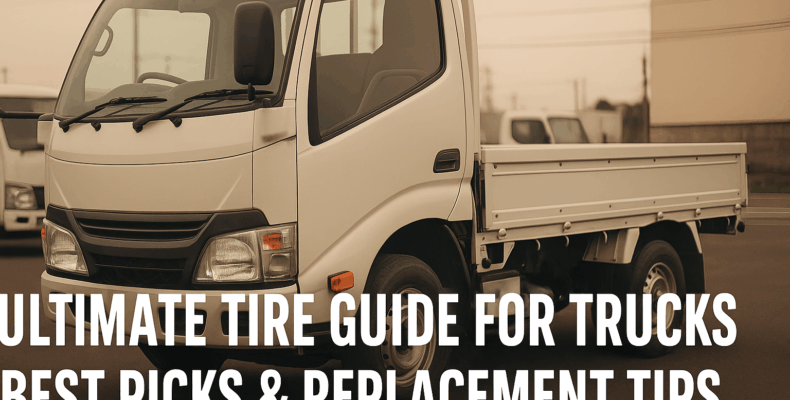If you’re planning to import a Japanese used truck, one key aspect you should never overlook is tire selection and replacement. Whether you’re transporting goods across African highways or navigating narrow streets in the Caribbean, having the right tires means better performance, safety, and durability.
In this detailed guide, we’ll explore how to select the right tires for your truck, when to replace them, and what international buyers must consider. We’ll also introduce a helpful link to the Top 5 Trusted Japanese Used Truck Exporters for Global Buyers to help you start your import journey with confidence.
Why Tire Selection Matters for Exported Japanese Trucks
Choosing the correct tires does more than improve traction. It also extends fuel efficiency, reduces wear on suspension components, and provides smoother rides on challenging terrain.
Many buyers assume that the tires on a used truck from Japan are ready for long-term use. However, tire specifications in Japan may not match road conditions abroad, especially in countries with extreme temperatures or off-road terrains.
For example:
-
In the Philippines, heat-resistant and water-dispersing treads are essential.
-
In Kenya, load-bearing radial tires perform better on rugged rural roads.
That’s why tire upgrades are often a smart first step after purchase.
Key Factors When Choosing Truck Tires
Before selecting new tires, it’s important to review a few essential points:
1. Tire Size Compatibility
Always check the manufacturer’s recommendation. Oversized or undersized tires may cause handling issues and reduce braking efficiency.
2. Load Index & Speed Rating
These ratings ensure the tires can handle the truck’s weight and driving conditions. For heavy-duty commercial trucks, a high load index is a must.
3. Tread Pattern Selection
-
Highway tires offer smoother rides and better fuel economy.
-
All-terrain tires balance off-road ability and road comfort.
-
Mud tires suit construction sites and rural zones with poor road conditions.
4. Climate and Weather Consideration
Hot climates demand heat-resistant rubber compounds. Meanwhile, countries with rainy seasons require excellent wet traction.
Signs It’s Time to Replace Your Tires
Tires may look fine at a glance. But here are clear signs it’s time for a replacement:
-
Tread depth is below 1.6mm (use a tread gauge or coin test).
-
Uneven wear on treads, often due to alignment issues.
-
Cracks on the sidewalls or bulges.
-
Vibration while driving, even on smooth roads.
Pro tip: Most tires expire 6–10 years after manufacturing, even if unused. Always check the DOT date code.
New vs. Used Tires: What’s Better for Your Imported Truck?
While used tires can be cheaper, new tires provide peace of mind for long-haul use and safety assurance. Especially when dealing with commercial trucks, it’s better to invest in reliable tires that suit your operational needs.
If you buy a truck with stock Japanese tires, consider replacing them before registration or inspection in your country.
Popular Tire Brands for Japanese Trucks
Here are some globally trusted brands for quality and durability:
-
Bridgestone – Excellent for highway and mixed terrain.
-
Yokohama – Known for performance in hot climates.
-
Dunlop – Great value and long-lasting tread.
-
Toyo Tires – Ideal for off-road and construction usage.
-
Michelin – Premium choice with top comfort.
How to Get the Best Tire Deals After Import
Once your truck arrives, you might be tempted to buy tires locally. However, some exporters offer tire upgrades before shipping, often at better rates.
Ask your supplier if they provide:
-
Tire replacement before export
-
Brand-new tire upgrade packages
-
Local compliance tire fittings
And don’t forget to check out this page to discover the most trusted exporters:
👉 Top 5 Trusted Japanese Used Truck Exporters for Global Buyers
Final Thoughts
Choosing and replacing tires may seem minor, but it’s a key factor in the long-term value and safety of your Japanese used truck. By selecting the right type, monitoring wear signs, and understanding your country’s conditions, you ensure your truck runs at peak performance.
Whether you drive in the deserts of the Middle East or the rainy coasts of West Africa, the right tires make the difference.
Get it right from the start – and drive with confidence.
